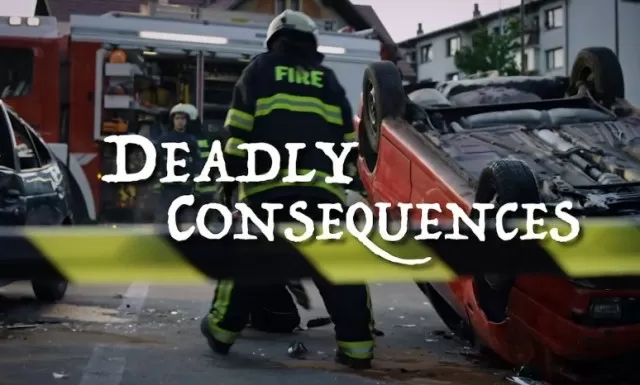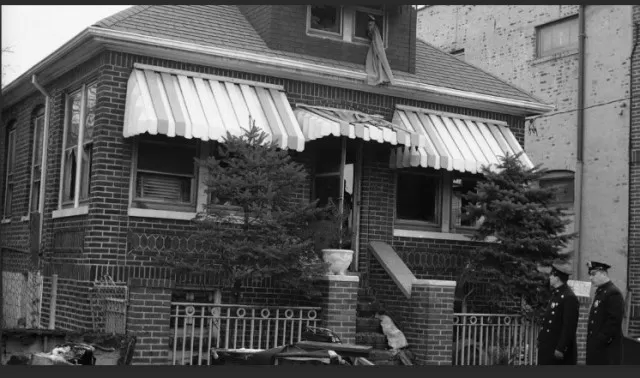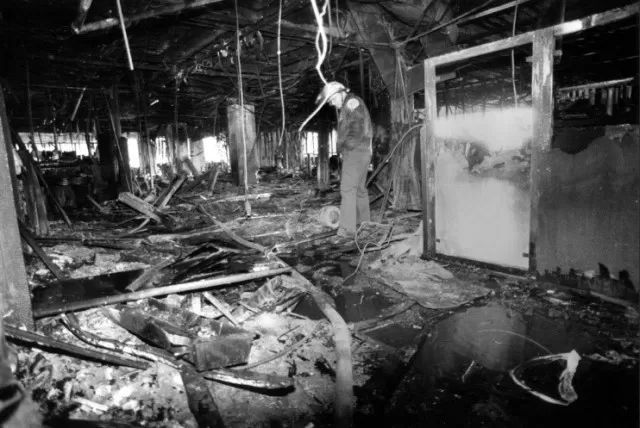Prominent House Fires in History.The Unpredictable Nature of Fires: Lessons from Famous Disasters. History is replete with examples of devastating fires that serve as stark reminders of the unpredictable and destructive nature of these disasters.
These events can occur suddenly, leaving in their wake the loss of homes, wealth, and tragically, lives. Here are some lessons we can glean from these famous fire disastersWhile fires can strike without warning and cause immense destruction, these disasters also serve as opportunities to learn, adapt, and improve our preparedness and response. By studying past incidents and implementing lessons learned, we can work towards a safer and more resilient future.
Devastating Outcomes

House fires stand as all-too-frequent calamities, leaving behind a trail of devastation and heartache.
These destructive blazes that consume or ravage our homes typically arise from accidental mishaps, the forces of nature, or lapses in caution, though regrettably, some are fueled by malicious intentions. As you delve into the stories within this collection, you’ll witness the diverse origins of these house fires, but they all share a common thread – serving as stark reminders of the formidable might of fire and the grave repercussions of underestimating or mishandling it.
Tragedy Strikes at Frank Lloyd Wright\’s Taliesin, 1914
A devastating fire tore through the expansive residence of legendary architect Frank Lloyd Wright in the picturesque landscape of southwestern Wisconsin.
What makes this tragedy even more chilling is that it was deliberately ignited by one of Wright’s own servants, Julian Carlton, during a horrific and murderous rampage that claimed the lives of seven individuals, including Wright’s mistress and her two young children.
Although the fire raged through the property, it was not the fire itself that caused the deaths; rather, Carlton took their lives with a gruesome axe attack.
Following his heinous acts, Carlton attempted to end his own life by ingesting hydrochloric acid, a desperate act that led to his own demise weeks later. Shockingly, he never provided a coherent reason for the ghastly spree that unfolded at Taliesin, leaving a lingering mystery shrouding this tragic chapter in architectural history.
(Pictured here is Taliesin West in Scottsdale, Arizona. ).
Arson Strikes Malcolm X\’s New York City Residence, 1965

In 1965, a sinister arson attack targeted the residence of civil rights icon Malcolm X in Queens, New York.
Fortunately, no lives were lost in this incident, but equally troubling, no one was held accountable for the crime. Malcolm X strongly suspected that the firebombing was a consequence of escalating tensions with the Nation of Islam, the organization from which he had distanced himself.
Approximately a week after this harrowing attack on his home, tragedy struck once more when Malcolm X was assassinated.
The individuals responsible for his murder had connections to the Nation of Islam, further deepening the belief that the firebombing and subsequent violence were intertwined events, casting a dark shadow over this pivotal period in civil rights history.
Tragedy Strikes at Watson Street in Glasgow, 1905
In 1905, a devastating fire engulfed a lodging house on Watson Street in Glasgow, resulting in the loss of 39 lives and leaving 24 individuals injured.
The horrific event unfolded during the late hours of the night when the majority of the over 200 lodgers were asleep, rendering them vulnerable to the rapidly spreading inferno.
The fire’s ferocity was exacerbated by the presence of highly flammable building materials and a brisk wind, which allowed it to devour the structure with frightening speed.
Compounding the tragedy, many of the lodgers were crammed tightly into the rooms, leaving them with limited escape routes, and a significant number found themselves trapped on the upper floors.
The Watson Street fire brought into sharp focus the dire absence of fire safety standards and protocols in such establishments.
In response to this devastating event, it prompted a thorough inquiry into the circumstances surrounding the fire, ultimately paving the way for critical improvements in fire safety regulations and building standards. This heart-wrenching incident serves as a somber reminder of the importance of fire safety and the need for robust measures to prevent such tragedies in the future.
The West Wing Fire of 1929: A Chilling Occurrence Amidst Troubled Times

Throughout its history, the White House has witnessed two significant fires.
The first occurred in 1814 during the War of 1812, an event forever etched in memory for Dolley Madison’s heroic rescue of Gilbert Stuart’s portrait of George Washington. The second fire, which transpired in 1929 during President Herbert Hoover’s tenure, was a far less dramatic event but carried its own weight of symbolism.
This second fire was attributed to faulty wiring, lacking the grandeur and devastation of the 1814 blaze.
However, its timing on Christmas Eve, a mere week following the infamous market crash of 1929, cast a foreboding shadow over the nation. In an era marked by economic uncertainty and the onset of the Great Depression, the West Wing Fire of 1929 seemed particularly ominous, serving as a somber reminder of the challenging times that had befallen the country.
*The information is for reference only.